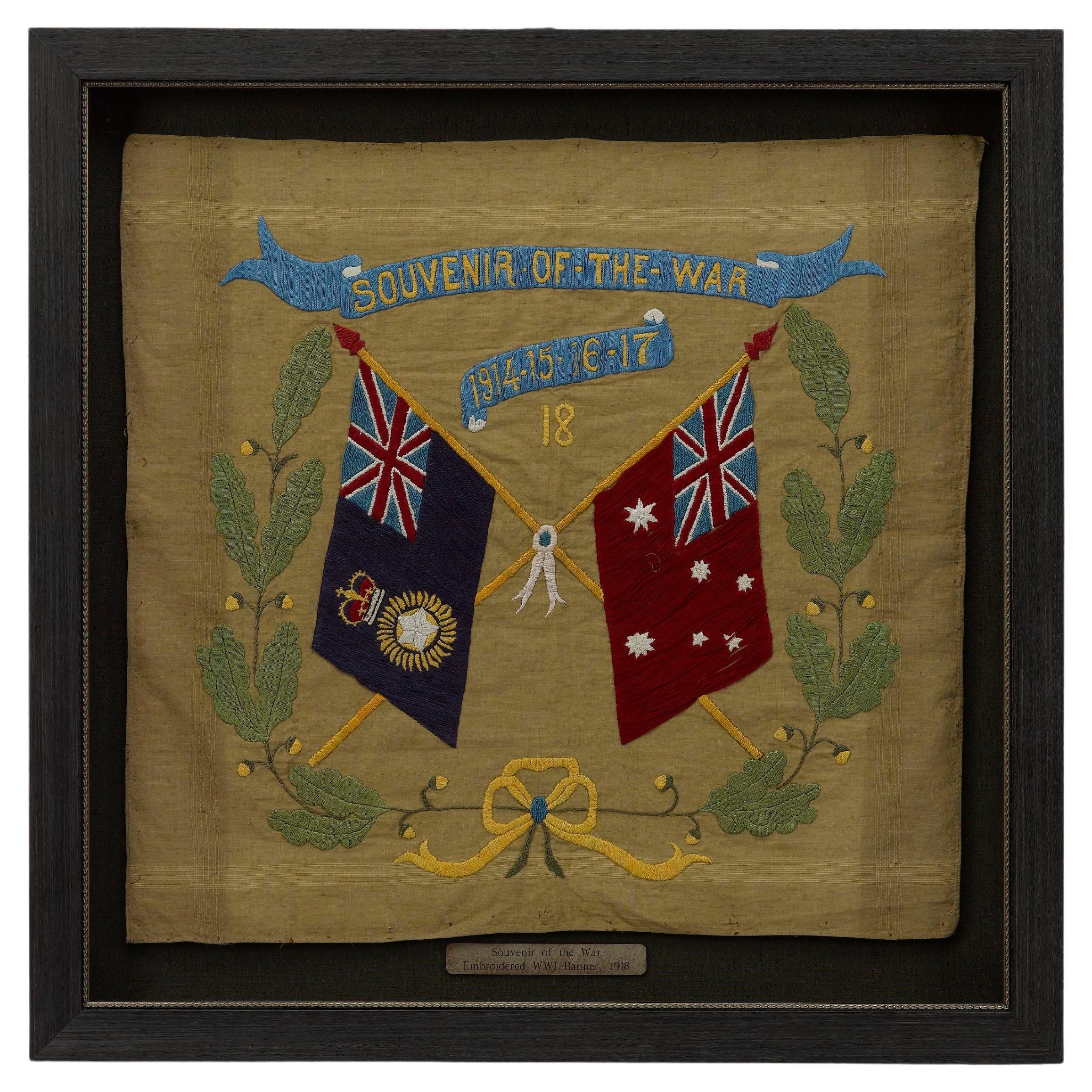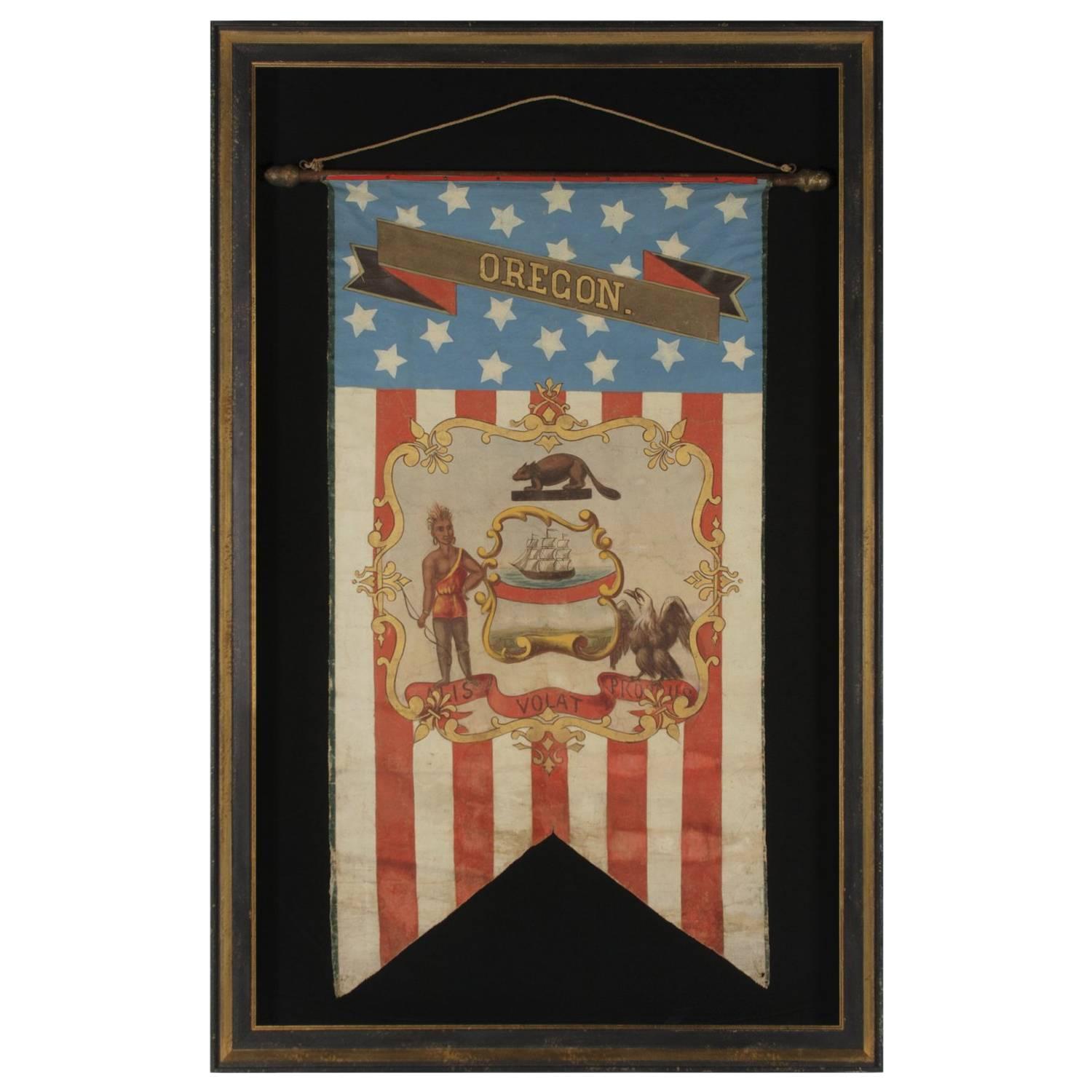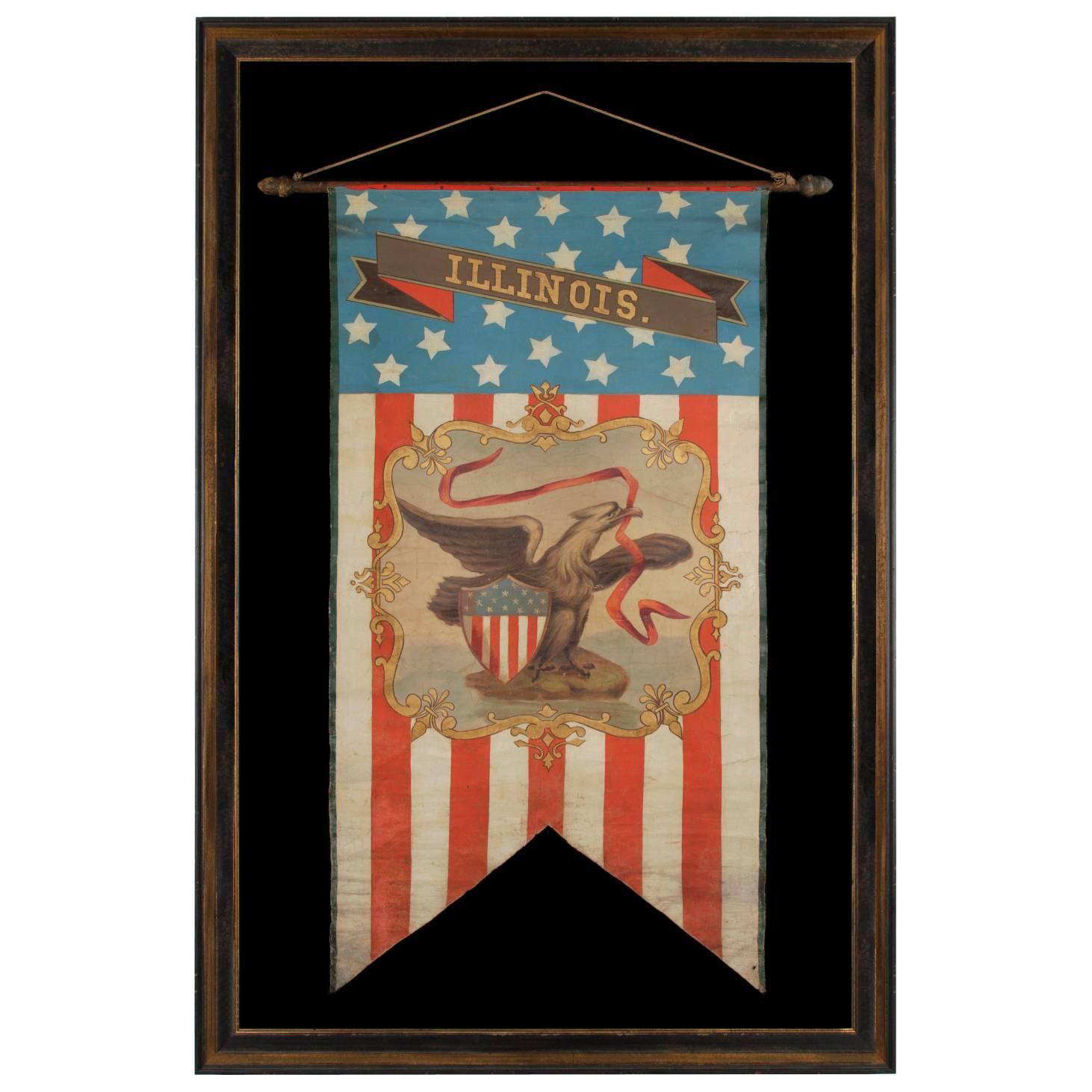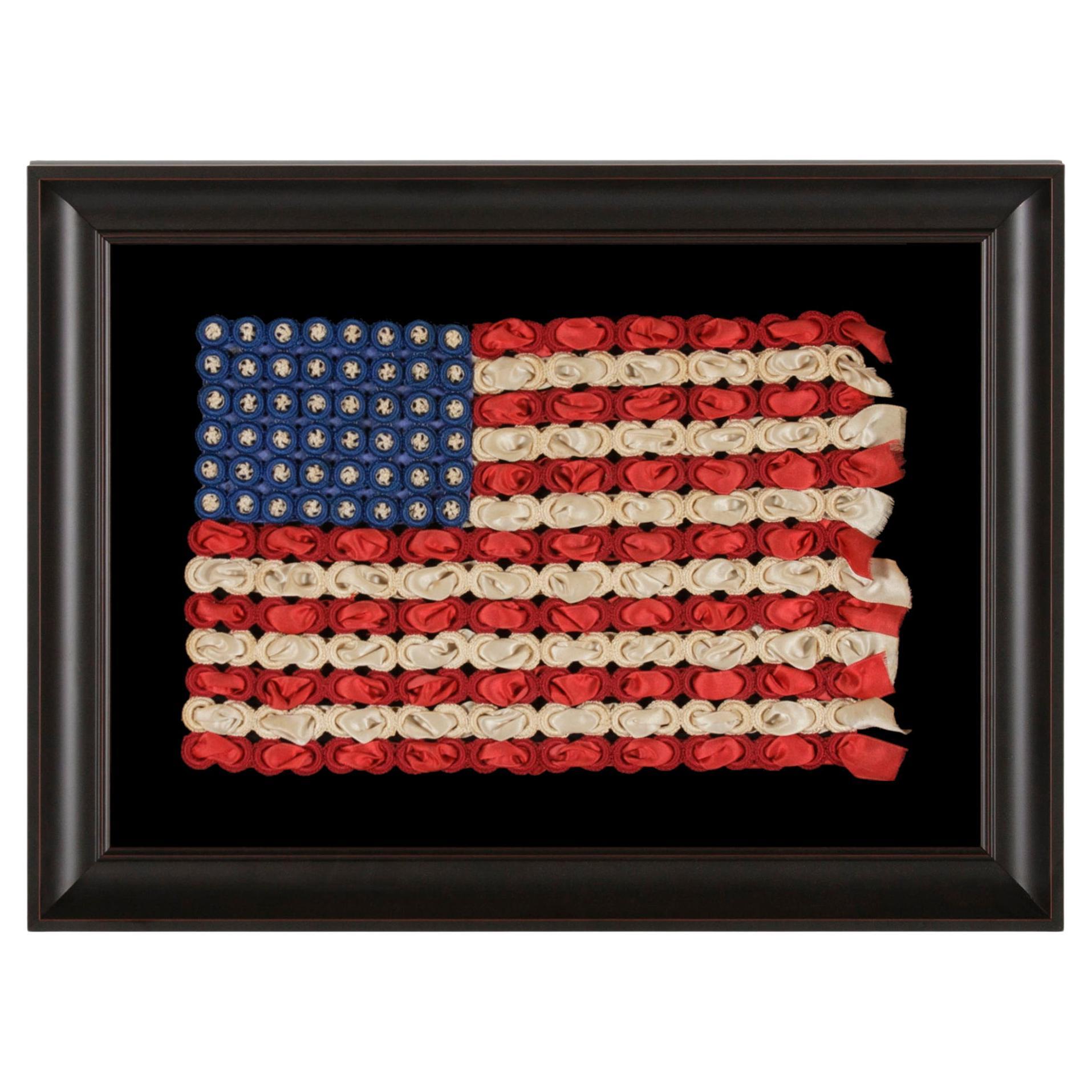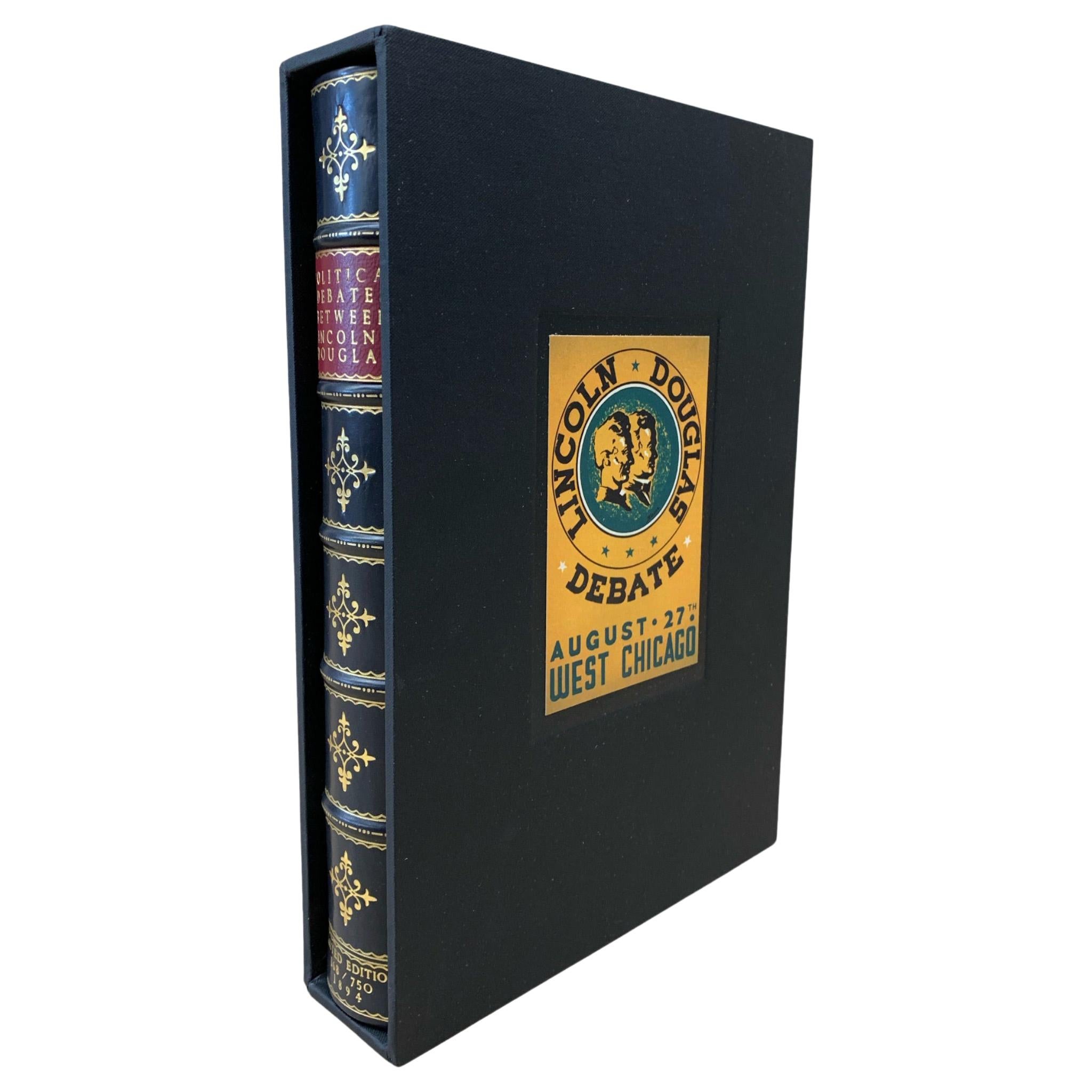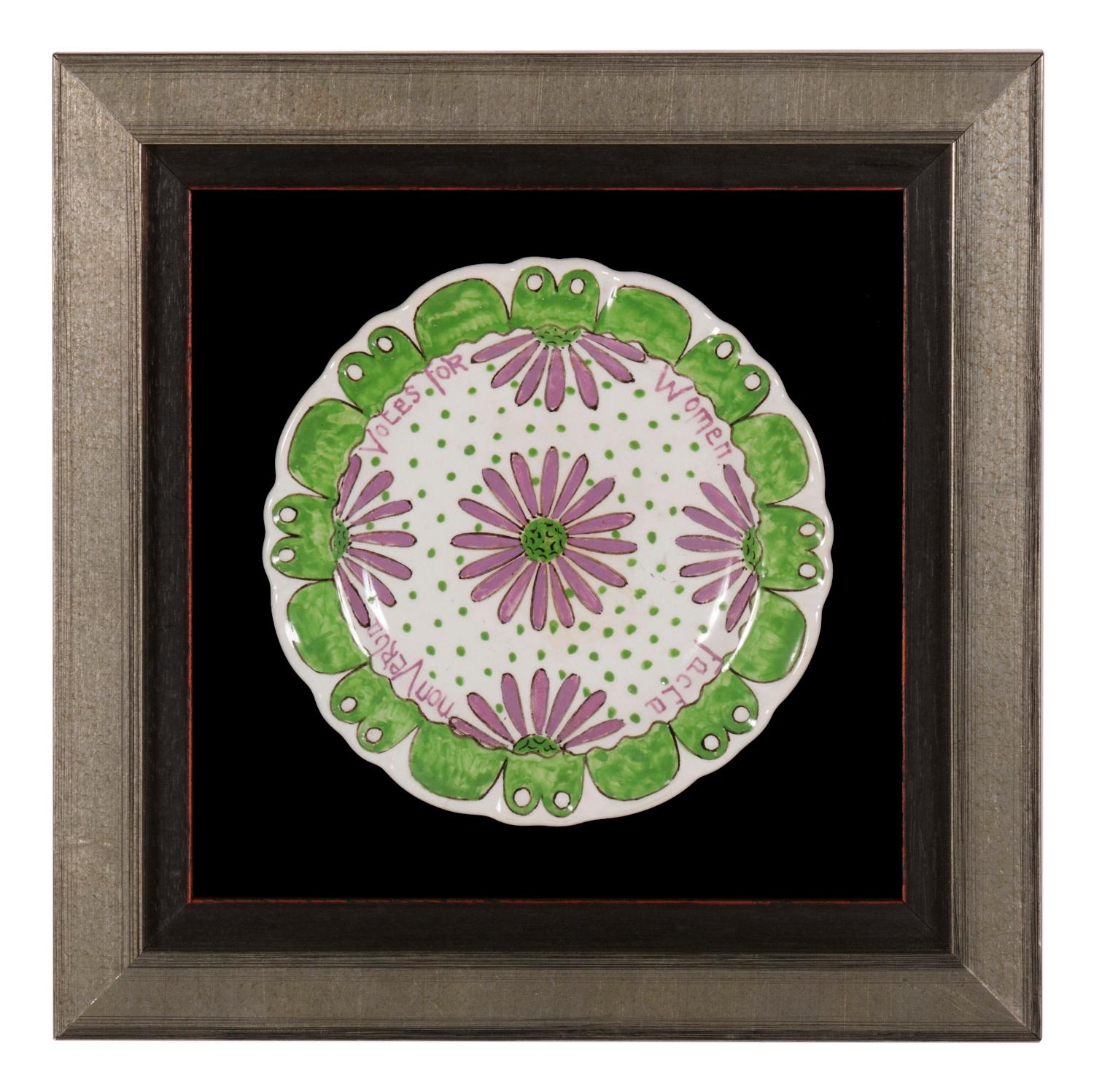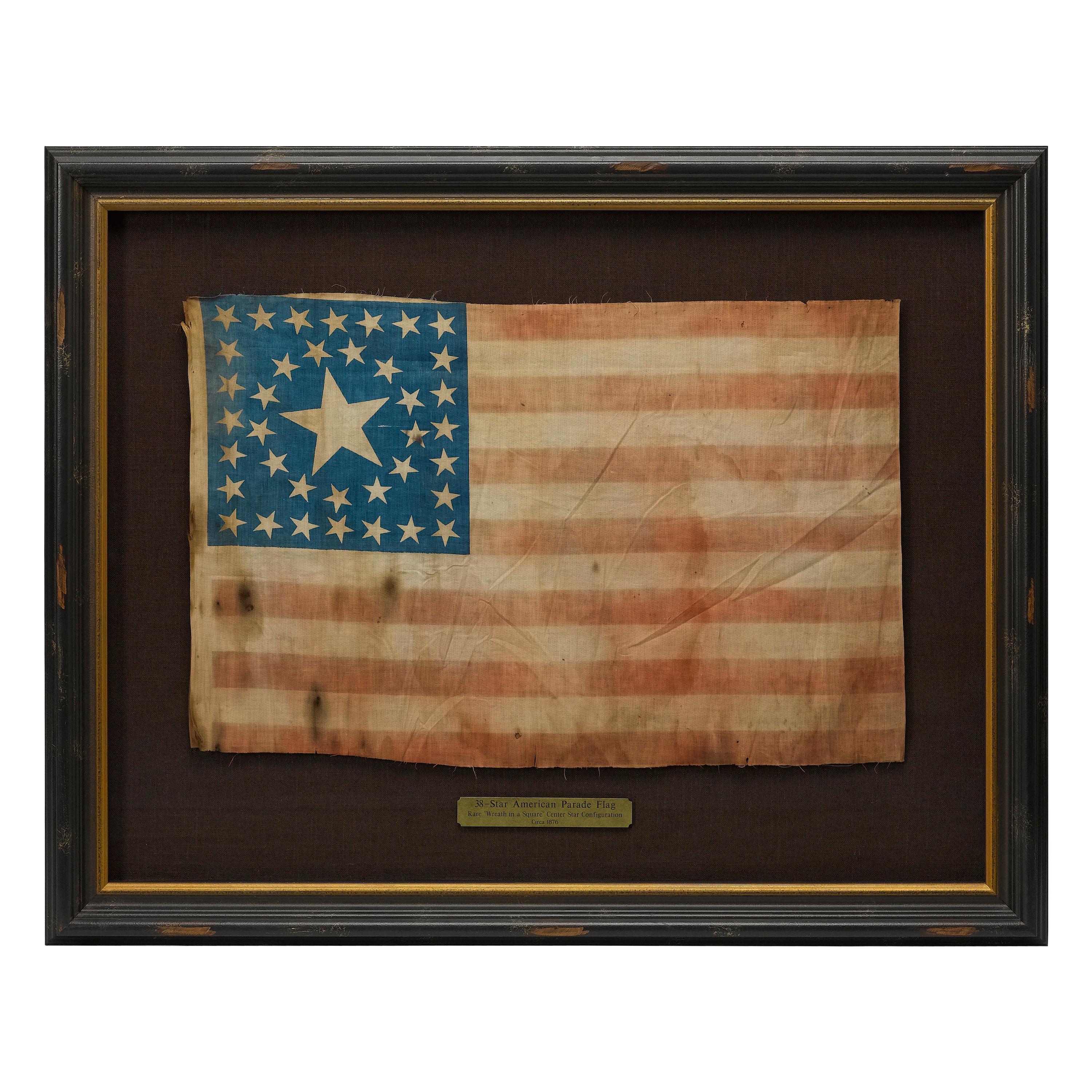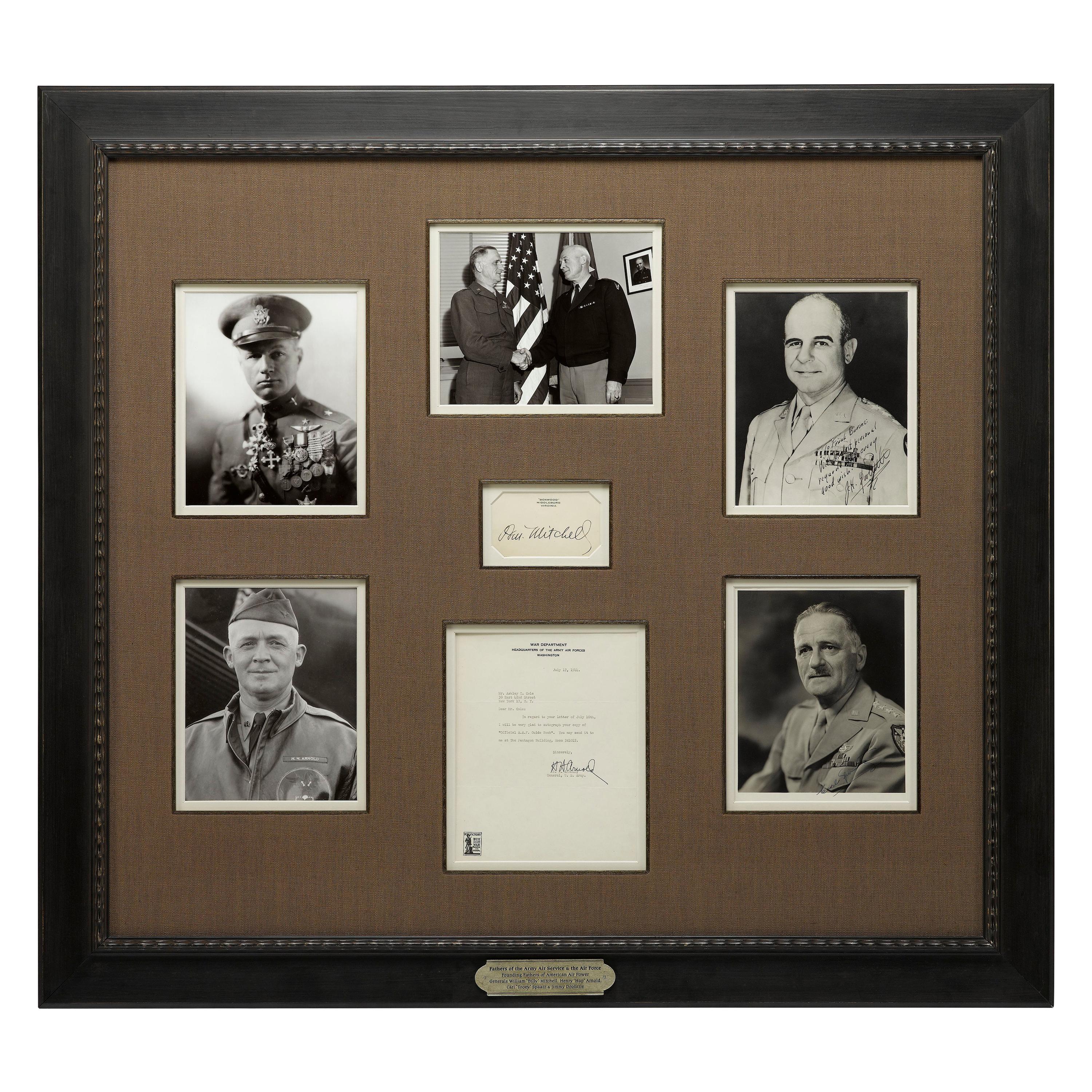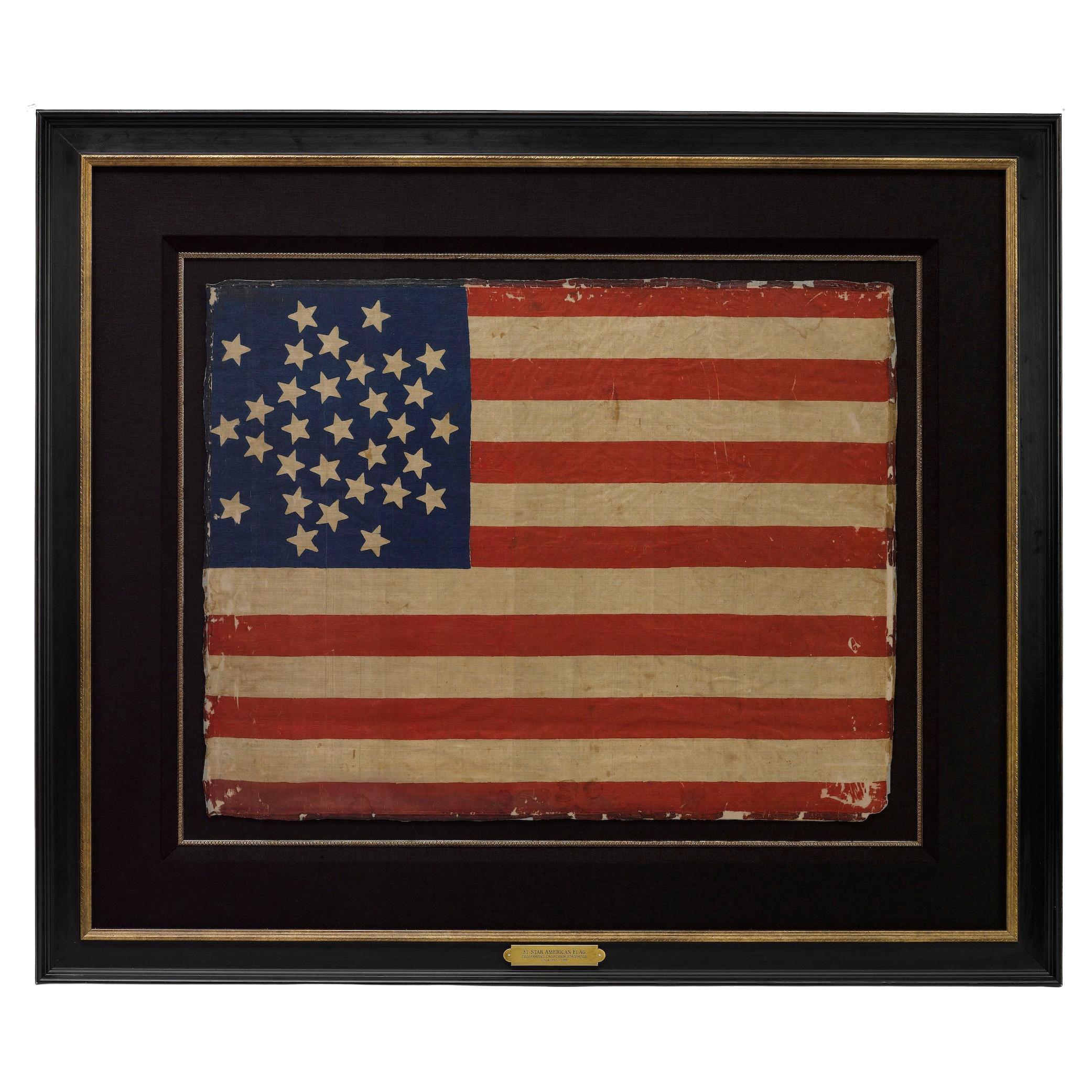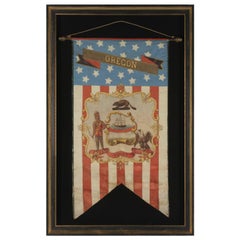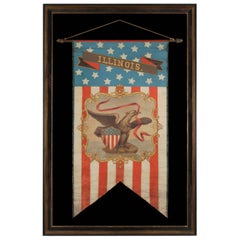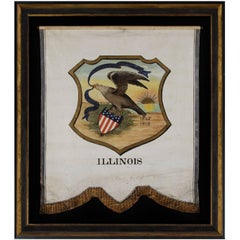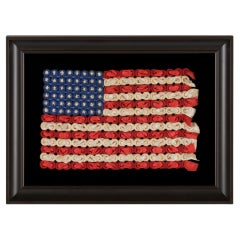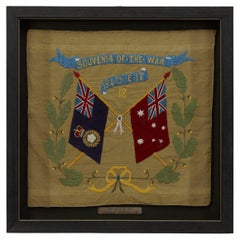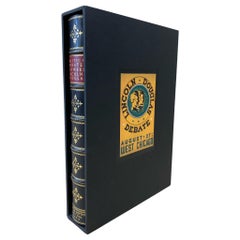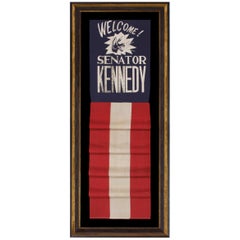
Graphic Banner Welcoming John F. Kennedy as Senator from Massachusetts
View Similar Items
Want more images or videos?
Request additional images or videos from the seller
1 of 8
Graphic Banner Welcoming John F. Kennedy as Senator from Massachusetts
About the Item
- Dimensions:Height: 88.25 in (224.16 cm)Width: 35.25 in (89.54 cm)Depth: 5 in (12.7 cm)
- Materials and Techniques:
- Place of Origin:
- Period:
- Date of Manufacture:1953-1960
- Condition:See Item Description.
- Seller Location:York County, PA
- Reference Number:Seller: pat-5531stDibs: LU849713293412
About the Seller
5.0
Recognized Seller
These prestigious sellers are industry leaders and represent the highest echelon for item quality and design.
Established in 1991
1stDibs seller since 2008
70 sales on 1stDibs
Typical response time: 1 to 2 days
Authenticity Guarantee
In the unlikely event there’s an issue with an item’s authenticity, contact us within 1 year for a full refund. DetailsMoney-Back Guarantee
If your item is not as described, is damaged in transit, or does not arrive, contact us within 7 days for a full refund. Details24-Hour Cancellation
You have a 24-hour grace period in which to reconsider your purchase, with no questions asked.Vetted Professional Sellers
Our world-class sellers must adhere to strict standards for service and quality, maintaining the integrity of our listings.Price-Match Guarantee
If you find that a seller listed the same item for a lower price elsewhere, we’ll match it.Trusted Global Delivery
Our best-in-class carrier network provides specialized shipping options worldwide, including custom delivery.More From This Seller
View AllHand-Painted Patriotic Banner with the Seal of the State of Oregon
Located in York County, PA
HAND-PAINTED PATRIOTIC BANNER WITH THE SEAL OF THE STATE OF OREGON AND GREAT FOLK QUALITIES, 1861-1876:
Swallowtail format, patriotic vertical banne...
Category
Antique Late 19th Century American Political and Patriotic Memorabilia
Materials
Canvas
Price Upon Request
Hand-Painted Patriotic Banner With The Seal of the State of Illinois
Located in York County, PA
HAND-PAINTED PATRIOTIC BANNER WITH THE SEAL OF THE STATE OF ILLINOIS AND GREAT FOLK QUALITIES PROBABLY MADE FOR THE 1868 DEMOCRAT NATIONAL CONVENTION...
Category
Antique 1860s North American Political and Patriotic Memorabilia
Materials
Canvas
Price Upon Request
Hand-Painted 19th Century Banner with the 1867 Proposed Seal of Illinois
Located in York County, PA
HAND-PAINTED 19TH CENTURY BANNER WITH AN 1867 VERSION OF THE SEAL OF THE STATE OF ILLINOIS, PROPOSED IN THAT YEAR BY THE SECRETARY OF STATE, BUT IN A VARIATION NEVER FORMALLY ADOPTED
Banner with the Illinois State Seal, in a rare variation of the design, never adopted. In 1867 Illinois Secretary of State Sharon Tyndale proposed that the phrases in the state motto be reversed. In the wake of the Civil War, (which ended in 1865,) Tyndale suggested that the verbiage be changed from "State Sovereignty--National Union" to "National Union--State Sovereignty,” which made sense given the recent secession of the Southern States, which placed their own interests first. Illinois' own Abraham Lincoln had worked hard to preserve national interests, echoed here in the altering of the language. Though Tyndale’s suggestion was rejected, he was nonetheless charged with creating a new design, which he did and was soon adopted. This displayed the dates of "1818," when Illinois became a state, and "1868," when the seal was officially changed. Interestingly enough, Tyndale did manage to send a message in the new version by turning the word “sovereignty” upside-down , with the surmised explanation that this fit accordingly with the orientation / position of the streamer.
The banner is beautifully hand-painted on muslin and retains its original staff. The shape is beautifully scalloped at the bottom edge, which is painted to look as if there is an applied fringe. Most of the elements are congruent with the 1868 version, but there are various differences. Set within a shield-shaped medallion—usually circular—is the expected eagle in a side view, spread wing pose with beak uplifted. The eagle is supposed to be perched upon a rock with one talon, while gripping a Federal shield in the other. Here there is no rock and both talons grip the shield, which displays 13 stars. Note the date of "1867" and Tyndale's preferred order of the wording on the billowing ribbon in the eagle's beak. The foreground of the official design is all grass. Here there are olive branches—a peacetime reference appropriate for a country recovering from war—on a grassy area, set upon a sandy shore before Lake Michigan, with a rising sun on the horizon.
Mounting: The banner was mounted and framed within our own conservation department, which is led by masters degree trained staff. We take great care in the mounting and presentation of flags and have preserved thousands of examples; more than anyone worldwide.
The background is 100% cotton twill, black in color. The mount was placed in a black-painted, hand-gilded and distressed Italian molding. A shadowbox was created to accommodate the staff. The glazing is U.V. protective plexiglass. Feel free to contact us for more details.
Banner - 49" x 56.5"
Frame - 67.75" x 59.25"
About Jeff R. Bridgman Antiques, Inc.:
As an advisor to top museums and collectors alike, Jeff Bridgman is the world's leading expert and source for antique American flags and political textiles...
Category
Antique 1860s American Political and Patriotic Memorabilia
Materials
Cotton
Price Upon Request
48 Crocheted Stars on Graphic, Three-Dimensional Flag Made of Silk, ca 1917-1918
Located in York County, PA
48 crocheted stars on a very graphic, three-dimensional flag made from silk ribbon and crocheted rings, WWI Era (U.S. involvement 1917-18)
Homemade, ha...
Category
Early 20th Century Political and Patriotic Memorabilia
Materials
Silk
Suffragette Plate, "Deeds Not Words" & "Votes for Women", The Only Known Example
Located in York County, PA
ENGLISH PORCELAIN SUFFRAGETTE PLATE WITH "DEEDS, NOT WORDS" AND "VOTES FOR WOMEN" SLOGANS, ONE-OF-A-KIND AMONG KNOWN EXAMPLES, CA 1905-1918
English porcelain plate, made for the Women's Suffrage movement in the U.K. One-of-a-kind among presently known examples, this wonderful Arts & Crafts design features a green, frog-like pattern around the border, surrounding violet and green or daisies, on a polka dot green background. Interspersed between the flowers are the words "Votes for Women" and, in Latin, the phrase "Facta non Verba...
Category
Early 20th Century English Political and Patriotic Memorabilia
Materials
Porcelain
1862 Civil War Playing Cards with Stars, Flag, Sheilds and Eagles
Located in York County, PA
1862 Civil War playing cards with stars, flags, shields, & eagles, and face cards illustrating civil war officers and lady, Columbia, ca 1862, Benjamin Hitchcock, New York
1862 Civil War playing cards with suits represented by stars, flags, shields, & eagles, in lieu of the traditional French suits of hearts, diamonds, clubs, and spades. The face cards feature Union Army officers and Lady Columbia [a.k.a. Lady Liberty, Goddess of Liberty]. Entitled “Union Playing Cards,” two versions of this deck were produced in New York by Benjamin W. Hitchcock’s “American Card Company.” This is the earlier of the two. The other was released in 1863.
There are 52 cards in total with the ace of spades doubling as the title card, as was often the case during the 19th century. The telescoping box...
Category
Antique 1860s American Political and Patriotic Memorabilia
Materials
Paper
Price Upon Request
You May Also Like
Souvenir of the War 1914-15-16-17-18 Banner
Located in Colorado Springs, CO
Presented is a stunning textile banner from the first World War, dating to 1918. The square tan cotton cloth is embroidered with two crossed flags, the ...
Category
Vintage 1910s Australian Political and Patriotic Memorabilia
Materials
Cotton
AL Malaikah Vintage Iconic Masonic Shriner Burgundy Wool Fez Hat in Original Box
Located in North Hollywood, CA
AL Malaikah vintage Masonic Shriner iconic burgundy wool Fez hat with original box.
Al Malaikah, legion of Honor vintage fez hat from the Los Angeles ...
Category
Vintage 1970s American Moorish Political and Patriotic Memorabilia
Materials
Wool
AL Malaikah Vintage Iconic Masonic Shriner Burgundy Wool Fez Hat
Located in North Hollywood, CA
AL Malaikah vintage Masonic Shriner iconic burgundy wool Fez hat.
Al Malaikah, legion of Honor vintage fez hat from the Los Angeles Al Malaikah Shrine...
Category
Late 20th Century American Moorish Political and Patriotic Memorabilia
Materials
Wool
Political Debates Between Abraham Lincoln & Stephen A. Douglas, Limited Edition
Located in Colorado Springs, CO
Lincoln, Abraham and Stephen A. Douglas. Political Debates Between Hon. Abraham Lincoln and Hon. Stephen A. Douglas, In the Celebrated Campaign of 1858, in Illinois, Including the Preceding Speeches of Each, at Chicago, Springfield, Etc.; Also, the Two Great Speeches of Mr. Lincoln in Ohio, in 1859. Cleveland: The Burrows Brothers Company, 1894. Limited edition printing, No. 168 of 750. Presented in ¼ leather and cloth binding, with gilt titles and raised bands to spine, with a new archival cloth slipcase.
This is a special limited edition printing of the political debates of Lincoln and Stephen Douglas...
Category
Antique Late 19th Century Political and Patriotic Memorabilia
Materials
Paper
38-Star Antique American Flag with Unique Canton, circa 1876-1890
Located in Colorado Springs, CO
This is a striking 38-star American flag. The flag dates to 1876-1890, when Colorado (represented by the large star in the center of the flag’s canton) joined the Union as the 38th s...
Category
Antique Late 19th Century American Political and Patriotic Memorabilia
Materials
Muslin
Fathers of the Air Service Authentic Signature Collage, circa 1926-1993
Located in Colorado Springs, CO
Presented is a collage celebrating the men who made an early impact on the formation of America’s Air Service. Complete with signatures by Jimmy Doolittle, Tooey Spaatz, Hap Arnold, ...
Category
Late 20th Century American Historical Memorabilia
Materials
Paper
